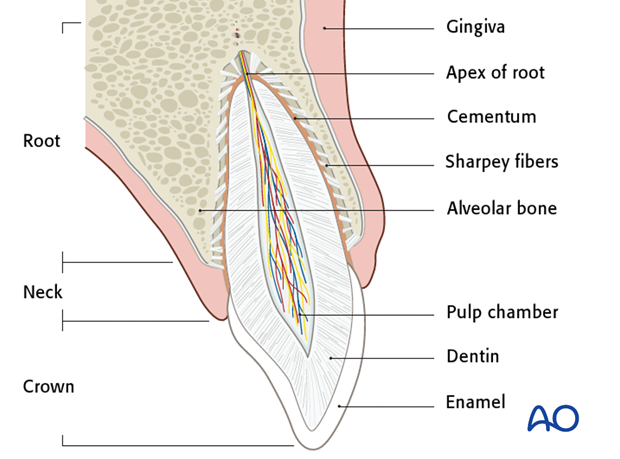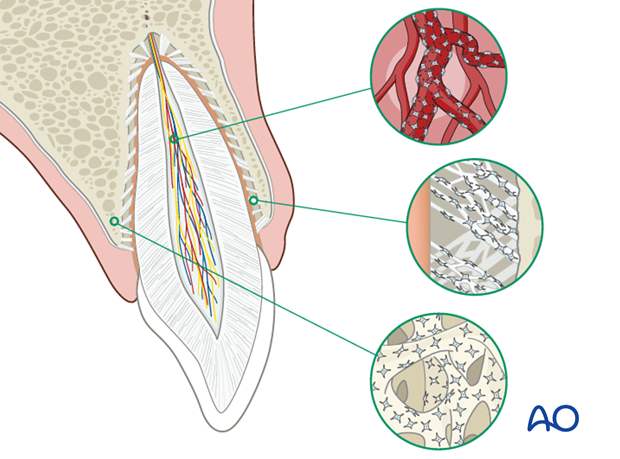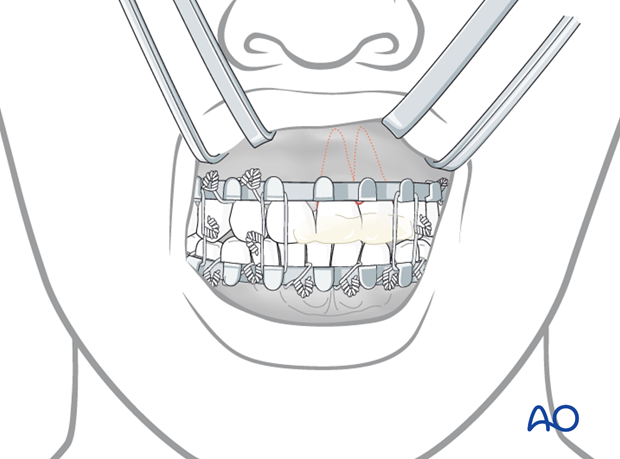Introduction to dentoalveolar trauma
1. Introduction
Craniomaxillofacial trauma may seriously affect patients’ lives and a key to the prevention of life time sequelae is the timely and correct care of trauma-related injuries. In the polytraumatized patient, cerebral, thoracic, abdominal and even lesions of extremities may take priority over craniomaxillofacial lesions. Nevertheless, craniomaxillofacial injuries deserve the highest standard of care.
The desired long-term outcome following dentoalveolar trauma strongly depends on an appropriate pre-hospital management, implementing preventive measures to rescue avulsed teeth, tooth fragments, etc.
Hospital care should include acute phase dental treatment with the aim of limiting damage for later definitive treatment. Later restorative or prosthodontic treatment options have to be considered. Whereas craniomaxillofacial injuries treated according to current AO principles promote return to a normal looking face, uncompromised eyesight, hardly visible scars, normal occlusion, unlimited jaw motion, dental injuries, if not dealt with in an appropriately, may stigmatize the patient for the rest of his/her life. The craniomaxillofacial surgeon should address dentoalveolar trauma with appropriate attention, not least to the patient’s occlusion and smile. Rigid fixation techniques ...
The purpose of this AO Surgery Reference module is to indicate the principles of dentoalveolar trauma management that the patient may leave hospital in the best possible condition. The interface between hospital and dental care differs in practice from country to country, for which reason the recommendations in this guide are not directed towards specific health care systems.
Tetanus
In cases where the injury has occurred outdoors and the wound is contaminated with soil, tetanus prophylaxis should be considered.

2. Healing of dental injuries
Dental injuries are very frequent, and world statistics show that such injuries affect approximately half of the population in the course of a life time.
Craniomaxillofacial fractures are less common but in about half of the cases they are combined with traumatic dental injuries. Healing of traumatic dental injuries is complex since three types of tissue have to heal as a unit, namely, pulp, periodontal ligament and supporting bone.
At least three lines of stem cells have to cooperate with revascularization in the regeneration process. Optimal healing depends on a timely and modern standard of dental care.
The outcome of a dental injury is related to the type of injury (ie, fracture type or luxation type), as well as the timing and treatment received. The initial care of dental injuries, alone or in combination with craniomaxillofacial trauma or any other injuries, merit the same degree of attention as any bone fracture.

3. Multiplicity of dental injuries
Dental traumatology covers a multiplicity of dental injuries incorporating nine fracture variants and six luxation types. Fractures and luxations may be combined, resulting in 54 different trauma scenarios where each scenario has specific treatment requirements and healing potentials.
Isolated dentoalveolar trauma has a peak incidence in the age group 9-12 due to the high degree of activity and poor judgment of this age group and affects mainly the central upper incisors. A smaller peak is in the age group of 2-3 years. This is primarily due to falls and undeveloped motor coordination. The main focus of this module is permanent dentition.
4. Pitfall: Do not include luxated teeth in arch bar fixation
The unique healing capacity of jaws and dentoalveolar injuries is not only due to the presence of stem cells but also to the excellent vascularity of tissues. Any intervention that may jeopardize vascularity should be avoided. In particular, luxated teeth, replanted teeth, and other teeth with periodontal ligament damage should not be included in the fixation of dental arch bars.
Note: Arch bars in this illustration were required to treat maxillomandibular fractures. Further note the two avulsed teeth are not fixed to the arch bar.
Periodontal vascularity of luxated teeth can be severely endangered by the application of arch bars that may induce a tension on the tooth, displace the tooth out of the socket, and create extensive compression of periodontal ligament leading to root resorption. Likewise, placing supporting wires to retain arch bars below the gingival margin may represent an entrance port for bacteria into the periodontal wound. Therefore, composite splints should constitute the standard of care.
Throughout this module, the use of atraumatic technique supported by an antibacterial regimen is emphasized in order to minimize surgery-related deterioration of the vascular supply.














